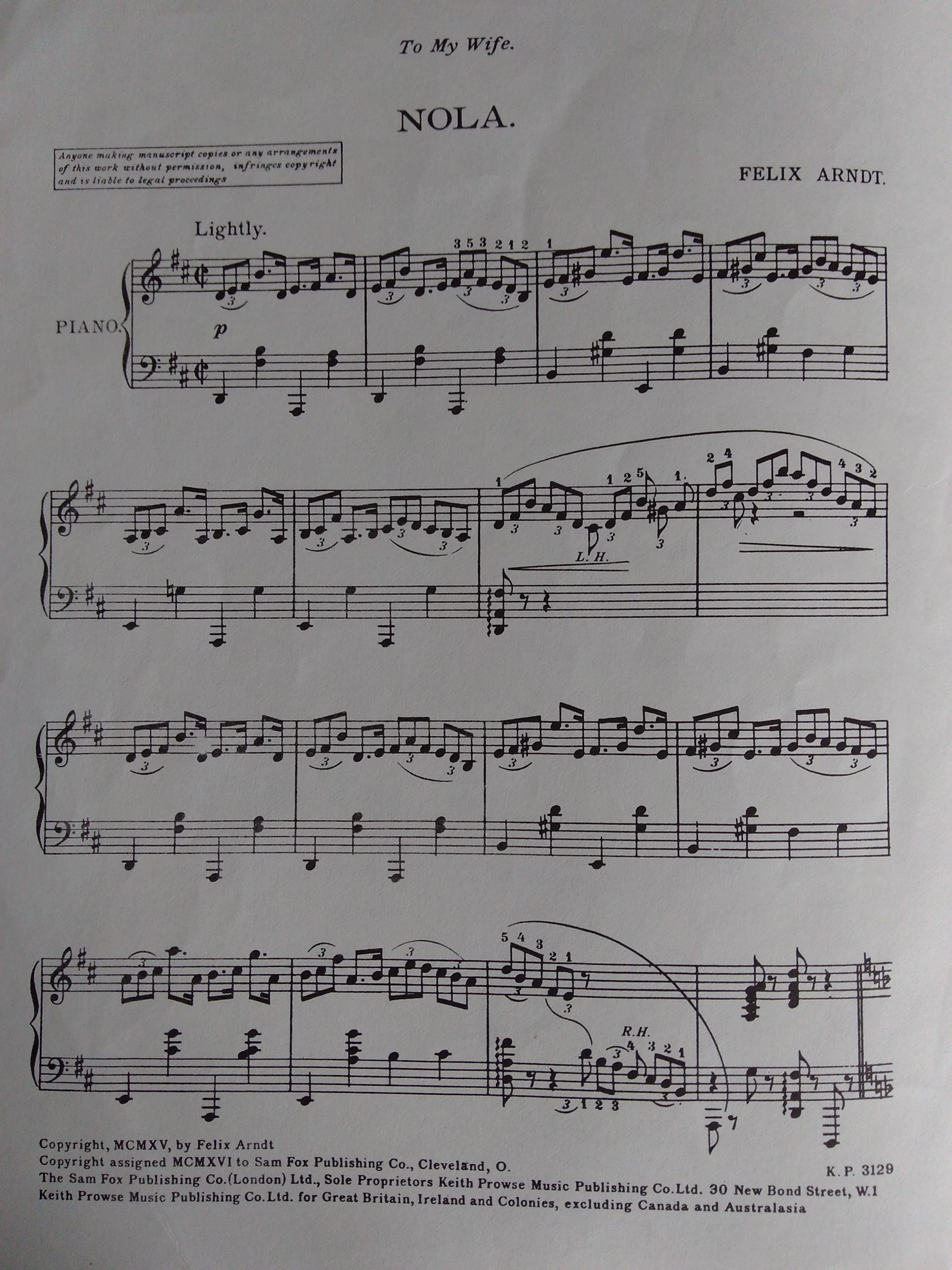 A sad one today! In the course of reading about the Spanish flu pandemic in 1918, I came across the fact that American composer Felix Arndt had died at the age of only 29 during the second wave of the pandemic in New York. I couldn’t help being struck by this, because of course New York’s recent suffering has been in the news.
A sad one today! In the course of reading about the Spanish flu pandemic in 1918, I came across the fact that American composer Felix Arndt had died at the age of only 29 during the second wave of the pandemic in New York. I couldn’t help being struck by this, because of course New York’s recent suffering has been in the news.
Felix Arndt was a talented pianist and composer who sailed into a career as a ‘demonstrator’ of sheet music for a New York publisher and was soon invited to make piano rolls, an early form of recording. Allegedly he made around 3000 piano rolls in a period of five years, which would equate to around three piano rolls each day, an astonishing work rate. He played new music, his own arrangements of well-known classics, and even some contemporary piano music, such as Debussy’s.
In his twenties he met a singer named Nola, who became his wife. She inspired his most famous composition, often cited as one of the first examples of ‘novelty’ piano music. ‘Nola’ is not exactly ragtime, but like ragtime it has a regular beat and a steady tempo, delivered with a twinkle in the eye. It doesn’t feature the syncopation we associate with Scott Joplin, but it has intriguing dotted patterns which work across the beat, throwing the emphasis onto different parts of the pattern. It was the blueprint for a lot of later ‘novelty’ piano music characterised by a blend of elegance and cheek.
‘Nola’ was a big hit when published in 1916, but Felix Arndt didn’t live long enough to reap much of the benefit. Ten years later, the Music Trade Review optimistically reported that ‘its popularity was immediate, demonstrating that the public, while favoring popular music, appreciates compositions of the better type’.
Someone put words to ‘Nola’ so that it would have another flush of commercial success as a song. But this didn’t really work. ‘Nola’ is rhythmically catchy, rather than melodic. The song arrangement simplified the rhythm to make it easier, and some of the charm of the original was lost (at least in my view).
You can try putting words to the original tune yourself to see how tricky it would be to sing. [A suggestion from me: ‘Isn’t it nice/to be the guy/who catches the eye/of somebody beautiful’…].
I find it poignant to think that this sort of cheery piano music was all the rage as the Spanish flu struck America.




I recognise this but have never known what it was! Thank you for story – Felix Arndt would be pleased to be remembered.
Oh wow, that really takes me back. A neighbouring farmer and old friend here in rural Western Australia always keeps his upright in tune even though neither he nor his wife plays. It is lovely to visit them and to play on the piano while looking at the sweeping views of our ‘sunburnt country.’ A ragged old copy of this tune is always in the piano stool and never fails to bring joy and amusement to all!